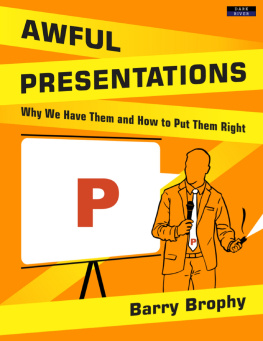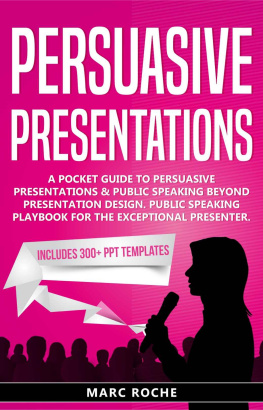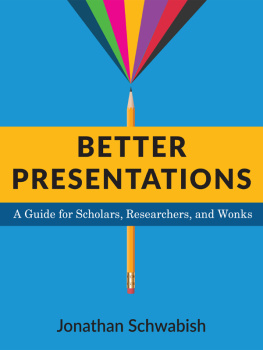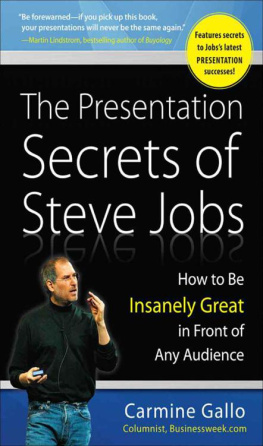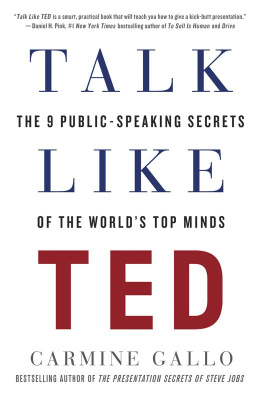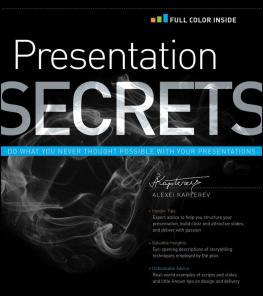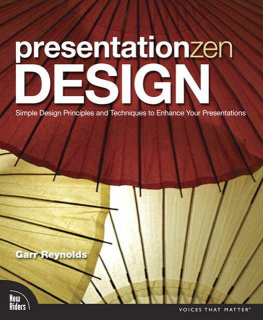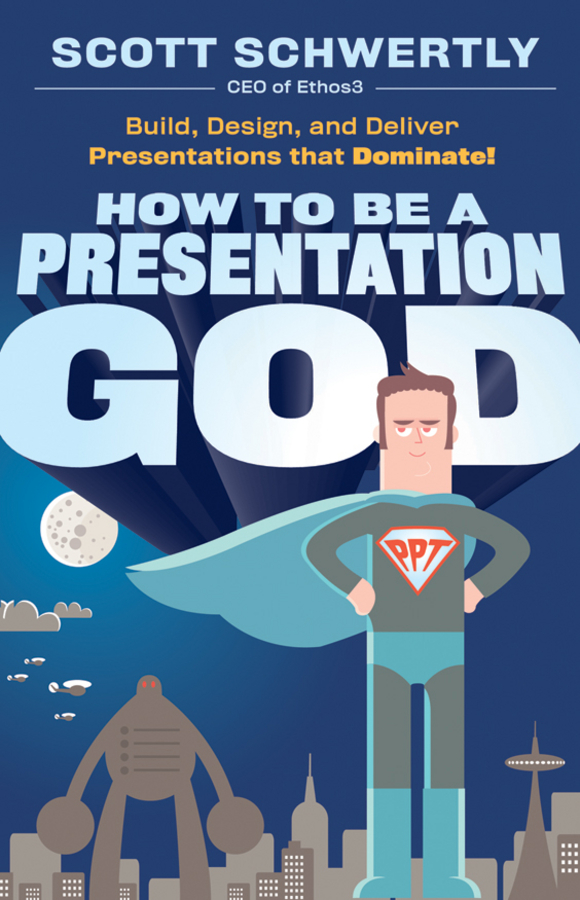Contents

Copyright 2011 Scott Schwertly. All rights reserved.
Published by John Wiley & Sons, Inc., Hoboken, New Jersey.
Published simultaneously in Canada.
No part of this publication may be reproduced, stored in a retrieval system, or transmitted in any form or by any means, electronic, mechanical, photocopying, recording, scanning, or otherwise, except as permitted under Section 107 or 108 of the 1976 United States Copyright Act, without either the prior written permission of the Publisher, or authorization through payment of the appropriate per-copy fee to the Copyright Clearance Center, Inc., 222 Rosewood Drive, Danvers, MA 01923, (978) 750-8400, fax (978) 646-8600, or on the web at www.copyright.com . Requests to the Publisher for permission should be addressed to the Permissions Department, John Wiley & Sons, Inc., 111 River Street, Hoboken, NJ 07030, (201) 748-6011, fax (201) 748-6008, or online at http://www.wiley.com/go/permissions .
Limit of Liability/Disclaimer of Warranty: While the publisher and author have used their best efforts in preparing this book, they make no representations or warranties with respect to the accuracy or completeness of the contents of this book and specifically disclaim any implied warranties of merchantability or fitness for a particular purpose. No warranty may be created or extended by sales representatives or written sales materials. The advice and strategies contained herein may not be suitable for your situation. You should consult with a professional where appropriate. Neither the publisher nor author shall be liable for any loss of profit or any other commercial damages, including but not limited to special, incidental, consequential, or other damages.
Designations used by companies to distinguish their products are often claimed by trademarks. In all instances where the author or publisher is aware of a claim, the product names appear in Initial Capital letters. Readers, however, should contact the appropriate companies for more complete information regarding trademarks and registration.
For general information on our other products and services or for technical support, please contact our Customer Care Department within the United States at (800) 762-2974, outside the United States at (317) 572-3993 or fax (317) 572-4002.
Wiley also publishes its books in a variety of electronic formats. Some content that appears in print may not be available in electronic books. For more information about Wiley products, visit our web site at www.wiley.com .
ISBN 978-0-470-91584-4 (cloth); ISBN 978-1-118-01307-6 (ebk); ISBN 978-1-118-01308-3 (ebk); ISBN 978-1-118-01309-0 (ebk)
For Cara, you are my first fan and most important critic.
Foreword
Readers of my column and my blog know that the need to have regular human moments at work is similar to the need to stand up and stretch on an airplane: your well-being depends on it. On top of that, a workday with regular face-to-face contact is more energizing than a day full of contacts exclusively via computer and phone.
Working at the computer or talking on the phone for a long time is as exhausting as staring at the TV. The brain starts to crave rest from input overload and fuel from human contact.
So when youre feeling tired at work, try creating a human moment for an energy boost. It doesnt have to be earth-shattering and intimate. It can be short and professional. You just need to be paying attention.
Even better: use all those meetings you have every day to create your own opportunities for such human moments. Scotts giving you the drivers license crash course right herehell show you how to speak like you want to change the world. Hes got monsters to fight, and you get to be the hero. Use what Scott explains so well to connect with just one person in the audience (maybe that attractive one from Accounting). Just look him or her in the eye, right? Thats the usual advice.
But its so hard to look someone in the eye. Especially if you dont have confidence from knowing what youre doing up there. And most public speakers are not particularly naturally engaging. Thats why going after just one person is a great way to test yourselfto see if youre really connectedby forcing yourself to look at one single person while you make a point.
This is a way to know for sure if you are connecting with your audience when you talk. Sticking with one person for each point is painful and nearly impossible if you are not truly connecting your material to that person.
But what do you do when you see you arent connecting? Some people ignore it or trick themselves into thinking there is a connection: Think about all the deadly PowerPoint presentations youve sat through where the speaker was oblivious to boredom. Or just read onScott makes a great read out of all the time youve wasted on the bad presentations youve suffered through.
Comedian Esther Ku says the best thing to do when you can tell youre not connected is to acknowledge it. If a joke fails, I poke fun at myself so I show the audience that Im aware of whats going on. The audience doesnt need constant genius; the audience needs to know you are clued into how they are reacting.
After youve absorbed what Scotts offering here, youll seem like a constant genius, a presentation god, ready to connect, because youll have stopped wasting the audiences time. Youll be focused on just one person and thereby connect with everyone. And most important, youll have learned to respect yourself and your audience. What more can you ask from such a human moment?
Penelope Trunk
www.penelopetrunk.com
Founder of Brazen Careerist
Acknowledgments
A BIG THANK YOU!
I want to thank my family, my clients, Kristina Holmes (my agent), the great folks at Wiley (Lauren, thanks for the opportunity!), and everyone at Ethos3. I also want to give a special shout-out to Brandy Nicks, who designed all of the illustrations in this book. Brandy has been with Ethos3 almost since the beginning. Without her presentation design skills, Ethos3 wouldnt be the great company it is today. Also, a big thanks to Josh Roberts, who helped me fine-tune my content. His contributions have been priceless. And most importantly, I want to thank you for taking the time to read this book. I hope it has empowered you to change the world with your next presentation!
Heres a list of some of the people (dead and alive) who have inspired me along the way:
Steve Jobs
Guy Kawasaki
Garr Reynolds
Budd Hebert
Nancy Duarte
Dutch Hoggatt
Michael Hyatt
Steve Yzerman
Bert Decker
Austin Smith
Ms. Housley
Seth Godin
Harry Beckwith
Abraham Lincoln
Bruce Lee
Marcus Buckingham
Tony Robbins
Tony Horton
Cliff Atkinson
Hal Higdon
Harry Truman
Patrick Henry
Larry Lessig
Daniel Pink
Scott Bedbury
Emil Zatopek
Matt Bellamy
Dale Carnegie
Jerry Weissman
Napoleon Hill
Chapter 1
A Killer in Our Midst
French writer and Nobel Prize winner Andr Gide once said, Society knows perfectly well how to kill a man and has methods more subtle than death. Subtlety, thy name is PowerPoint.
What is it about bullet points that makes the human soul curl up into a ball of fetal terror? Why do fonts like Comic Sans and Papyrus sear the retinas so badly? How can so-called experts speak at length about the logistical applications of advanced financial modeling yet fail to zip up their pants?


